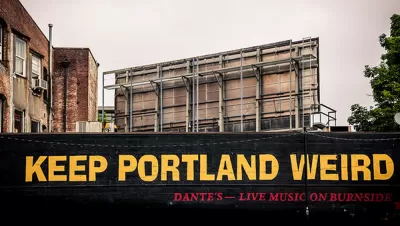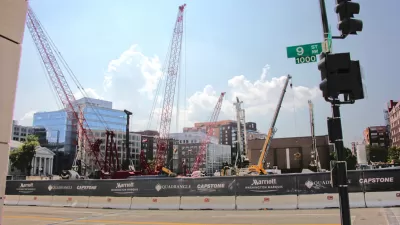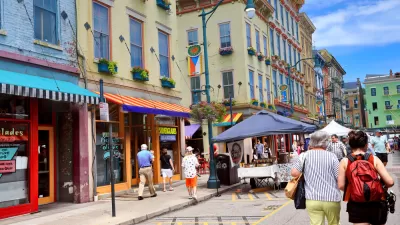A grassroots plan seeks to cultivate a sustainable, affordable center of Black culture in the neighborhood of Albina.

As the city of Portland launches new housing and investment programs, a coalition of community organizers, urban planners, and design professionals has proposed its own vision for inclusive economic development in the Albina neighborhood. The Right 2 Root plan fuses housing affordability, environmental sustainability, and the preservation of Black history and culture, Patrick Sisson reports in Curbed, calling the initiative "a framework for community-led urbanism."
The proposal would establish an ecodistrict—the city's sixth—where new community assets would foster health and wellness. It calls for walkable corridors connecting needed facilities like a food market, a community education center, and a daycare. "Other ideas include tiny home communities built around a shared garden plot, and the introduction of small accessory dwelling units (ADUs) to provide extra space for larger families and multigenerational living," Sisson writes.
Over the decades, planning policy has driven out Albina's historically Black population through a variety of means, Sisson explains. The neighborhood was targeted for urban renewal in the post-war era, paving the way for redevelopment at the end of the century. Today, revitalization programs are raising housing costs and fueling displacement.
Later this year, the collective plans to release a blueprint aimed at connecting Albina with its displaced Black residents throughout Portland.
FULL STORY: In Portland, a neighborhood designs its own solution to displacement

Alabama: Trump Terminates Settlements for Black Communities Harmed By Raw Sewage
Trump deemed the landmark civil rights agreement “illegal DEI and environmental justice policy.”

Study: Maui’s Plan to Convert Vacation Rentals to Long-Term Housing Could Cause Nearly $1 Billion Economic Loss
The plan would reduce visitor accommodation by 25% resulting in 1,900 jobs lost.

Why Should We Subsidize Public Transportation?
Many public transit agencies face financial stress due to rising costs, declining fare revenue, and declining subsidies. Transit advocates must provide a strong business case for increasing public transit funding.

Wind Energy on the Rise Despite Federal Policy Reversal
The Trump administration is revoking federal support for renewable energy, but demand for new projects continues unabated.

Passengers Flock to Caltrain After Electrification
The new electric trains are running faster and more reliably, leading to strong ridership growth on the Bay Area rail system.

Texas Churches Rally Behind ‘Yes in God’s Back Yard’ Legislation
Religious leaders want the state to reduce zoning regulations to streamline leasing church-owned land to housing developers.
Urban Design for Planners 1: Software Tools
This six-course series explores essential urban design concepts using open source software and equips planners with the tools they need to participate fully in the urban design process.
Planning for Universal Design
Learn the tools for implementing Universal Design in planning regulations.
Caltrans
Smith Gee Studio
Institute for Housing and Urban Development Studies (IHS)
City of Grandview
Harvard GSD Executive Education
Toledo-Lucas County Plan Commissions
Salt Lake City
NYU Wagner Graduate School of Public Service





























